Articles
Brief an Wiligut, 27.9.1935
Otto Rahn
Tiergartenstrasse 8a
Berlin W35
am 27. September 1935
An
SS Oberführer
K.M. Weisthor<
Berlin - Grunewald
Streng vertraulich!
Lieber Herr Oberst,
Otto Rahn Memorial Website interview with Jeanne D'Août, the Author of White Lie
Hi, Jeanne!
I congratulate you on the release of your book White Lie. This is a great event for all who are familiar with the work, searching and life of Otto Wilhelm Rahn. When did you first hear of him?
Jeanne:
The first time I heard of Otto Rahn was probably during my research of the history of Montségur and the Cathars in connection with Grail lore. I never studied the man himself and only knew what most people know; that he researched Grail lore, visited Montségur and was working for Himmler as a relic hunter in a pre-war Germany. It wasn't until 2008 that a friend sent me "Crusade against the Grail" in English, followed by "Lucifer's Court" and Nigel Graddon's "Otto Rahn, Quest for the Holy Grail". I was thinking of writing a thriller book at that time about the 1st century, and the mysteries of the Languedoc. I had already done a lot of research for the book, but didn't get around to actually writing it, because the financial crisis had made me and my husband work 7 days a week to make a living. In 2011 I first had the chance to sit down properly and started writing in January. I would write almost 18 to 20 hours a day for several months and Otto slowly became one of the key players in the book.
Русское предисловие к книге Рене Нелли "Катары. Святые еретики"
Ученый францисканец Вильгельм Баскервильский в романе Умберто Эко «Имя розы» объясняет своему ученику Адсону наличие огромного количества ересей и сект, которые порой непросто отличить друг от друга, следующим образом: «Представь себе... реку, мощную, полноводную реку, которая течет тысячи и тысячи верст в своем крепком русле, и ты, ее видя, в точности можешь сказать, где река, где берег, где - твердая земля. Однако в какое-то время, в каком-то месте эта река попросту устает течь — возможно из-за того, что течет она слишком долго и слишком издалека, возможно из-за того, что уже близится море, а море вбирает в себя любые, самые могучие реки, и таким образом любые, самые могучие реки перестают существовать. И река превращается в дельту.
Otto Rahn: las conexiones entre catarismo y nazismo
UNA DE LAS FIGURAS que más fascinación ha ejercido en relación al mundo “neocátaro” es Otto Rahn, que buscó el Santo Grial en la fortaleza de Montségur. Miembro de las SS que acabó expulsado de sus filas, dejó una obra escrita breve pero influyente en el entorno hitleriano al amalgamar nazismo y catarismo. Sabemos muy poco de él, pues su trayectoria está rodeada de toda suerte de especulaciones. Y es que su personalidad fue harto chocante: francófilo y al parecer homosexual, se desenvolvió en un universo nazi pangermánico y exaltador de la virilidad.
Así las cosas, los interrogantes sobre Rahn son numerosos, abarcan todos los órdenes de su vida y tienen difícil respuesta con las fuentes disponibles: ¿Fue un estudioso del catarismo o lo empleó como pretexto para labores de espionaje? ¿Actuó como un nazi convencido o su condición de homosexual y la falta de medios le llevaron a las filas de las SS? ¿Murió en 1939 o se orquestó una farsa para “blanquear” sus supuestos ancestros judíos? Al margen de sus móviles, sabemos con certeza que nazificó el catarismo y mereció la atención y la complacencia del máximo dirigente de las SS, Heinrich Himmler.
Otto Rahn: author, poet, Grail seeker, SS officer
In February 2007, Montserrat Rico Góngora published “The Desecrated Abbey”, in which he claimed that Heinrich Himmler, Hitler’s second-in-command and head of the Nazi SS, had made a secret wartime mission to an abbey in Spain, in search of the Holy Grail. Góngora even interviewed Andreu Ripol Noble, a former monk and the only person that spoke German, who was ordered by his superiors to guide Himmler during the visit in 1940. Ripol related that Himmler came to Montserrat inspired by Richard Wagner’s opera “Parsifal”, which mentions that the Holy Grail could be kept in “the marvellous castle of Montsalvat in the Pyrenees” – the mountain range that marks the border between France and Spain.
Il neopaganesimo di Otto Rahn
Il caso di Otto Rahn è ormai noto: è la storia di un giovane romantico, che insegue un sogno. Un giorno entra in contatto con un potere sensibile al mito – il Terzo Reich -, che lo lancia e lo valorizza: ciò che presto lo porta a credersi una specie di nuovo cavaliere templare. Il mito del Graal, quello di una società di puri e di idealisti, di un regno dello spirito, popolava il suo immaginario. Certo del legame storico tra l’eresia dei Catari e la poesia dei trovatori medievali, l’una è l’altra viste come sopravvivenza pagana sotto la scorza del cristianesimo ufficiale, Rahn si convinse che il fulcro di questa cultura si fosse trovato un tempo nel castello provenzale di Montségur, alle pendici dei Pirenei. Proprio il luogo dove, nel 1244, avvenne il finale sterminio dei Catari da parte della Chiesa. In questa zona, intorno al 1929, Rahn svolse ricerce, percorse grotte e camminamenti, rintracciò graffiti e interpretò simboli arcani. Alla fine raccolse il tutto e scrisse il celebre libro Crociata contro il Graal, pubblicato nel 1933. L’incontro fatale con Himmler, anch’egli interessato alla storia delle eresie e all’universo dei simboli pre-cristiani, il pronto arruolamento e la rapida ascesa nelle SS, portarono però Rahn a inciampare nel suo piccolo-grande segreto. Sembra infatti che una mal vissuta omosessualità sia stata all’origine delle sue dimissioni dall’Ordine Nero nel 1938 e infine del suo suicidio, avvenuto per congelamento tra le montagne del Tirolo, nel marzo del 1939. Rahn rimase vittima di un trauma, per esser stato coinvolto in un piccolo scandalo omoerotico? Non resse il clima ideologico delle SS? Venne forse spinto a quel gesto? O ci arrivò da solo, per evitare l’isolamento sociale e magari la persecuzione?
Karl Maria Wiligut, le mentor secret d’Himmler
Manfred Lenz, Dimanche, 30 Avril 2006
Un entretien avec Gabriele Winckler-Dechend<
Madame Winckler, vous avez personnellement connu Wiligut. Quand avez-vous été employée par lui au cabinet du Reichführer SS, Heinrich Himmler ?
Le colonel Wiligut était un ami de ma mère bien avant 1933 et elle était très intéressée par sa « Tradition ». A cause de cela, elle lui rendait souvent visite à ??? ou Wiligut possédait une petite maison depuis la fin de la première guerre mondiale. Elle était entourée d’un jardin qu’il cultivait lui-même pour nourrit sa famille.
Ce doit être en 1933 que le colonel fut persécuté en Autriche, du fait de ses liens avec Schönerer et Lüger .
Hans-Jürgen Lange: Otto Rahn oder was ist historische Wahrheit?
Der Volksmund sagt: "Lügen haben kurze Beine", schön wäre es, aber in Wirklichkeit wird Geschichte auch von unsterblichen "Zeitungsenten" beherrscht.
Was das mit Otto Rahn zu tun hat? Wie ich meine, eine ganze Menge.
Denn was bei Zeitungen nicht ins Gewicht fällt, wie heißt es doch so schön - "nichts ist älter als die Zeitung von gestern" - hat in Büchern ein langes Leben. Drei Beispiele aus der neueren Literatur können diese verschiedenen Formen von Scheintatsachen belegen.
Hans-Jürgen Lange
Hans-Jürgen Lange wurde am 22.11. 52 in Bad Sachsa/Südharz geboren. In Düsseldorf studierte er "Visuelle Kommunikation". Zahlreiche Reisen führten ihn nach Südost-Asien, Indien und Nepal.
Als Autor des Buches "Otto Rahn und die Suche nach dem Gral" hat Lange sich wohl am intensivsten mit Otto Rahn auseinander gesetzt. Er beriet Rüdiger Sünner zu dem Film "Schwarze Sonne", das britsche BBC drehte ein Interview mit ihm und der Filmemacher Richard Stanley dokumentierte sein biografisches Wissen zu Rahn in "The Secret Glory".
Kristallschädel von SS-Führer Heinrich Himmler entdeckt?
Sie sind mystisch und geheimnisvoll – die Kristallschädel der indianischen Hochkulturen. Jetzt wurde einer dieser angeblichen „Götterschädel" in Bayern gefunden. Und der befand sich früher vermutlich im Besitz von SS-Führer Heinrich Himmler! 09.03.2011 — 10:20 Uhr, Bild.de
Wie das Magazin „Mysteries“ berichtet, fand der Schweizer Journalist Luc Bürgin den Schädel (12 Kilogramm schwer, 17,5 Zentimeter hoch, 21 Zentimeter tief) auf dem Dachboden seines bayerischen Informanten – versteckt in einem alten Holzkasten. „Eine Spezialanfertigung, die sich wiederum in einem alten, abgeschabten Tornister aus Leder befand.“
Dieser Fund versetzt Historiker in Aufruhr! Denn seit Jahrhunderten geben die geheimnisvollen Totenschädel Rätsel auf.

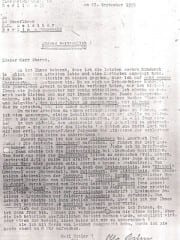
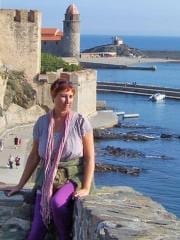
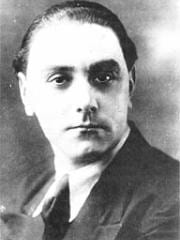
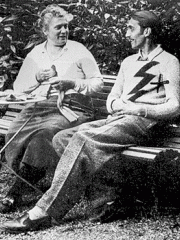

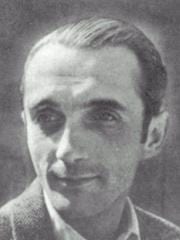
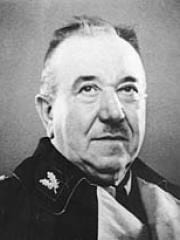
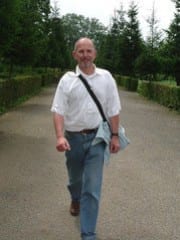
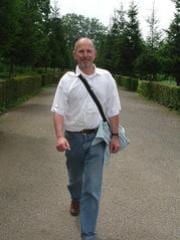
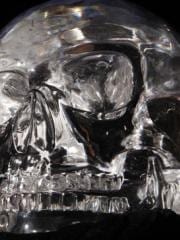
Commentaires récents
il y a 13 années 16 semaines
il y a 13 années 16 semaines
il y a 13 années 16 semaines
il y a 13 années 17 semaines
il y a 13 années 20 semaines
il y a 13 années 25 semaines